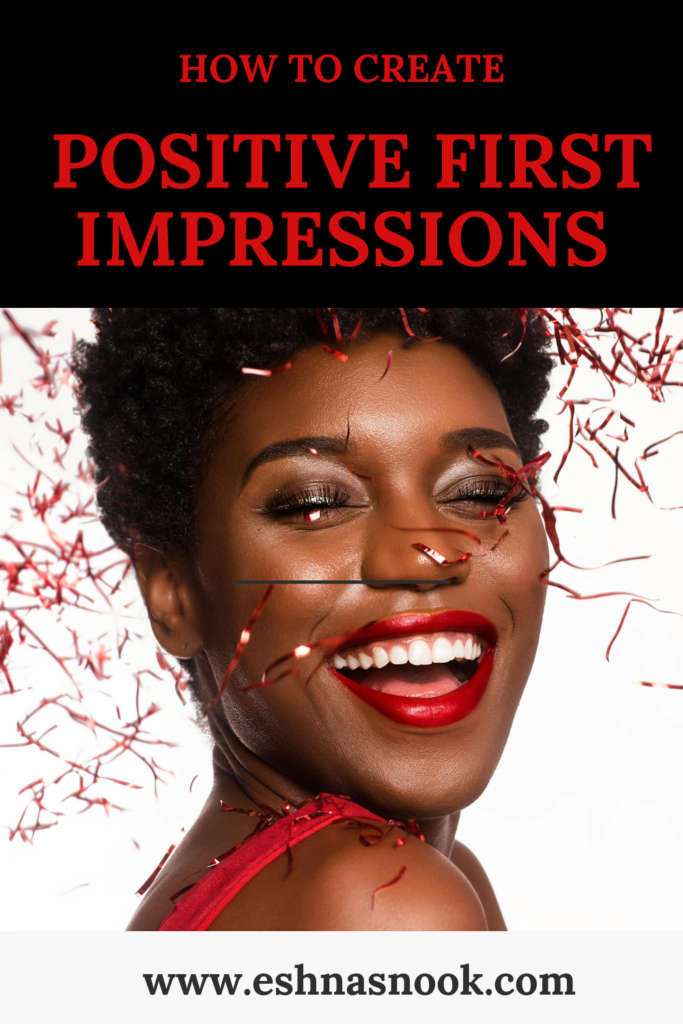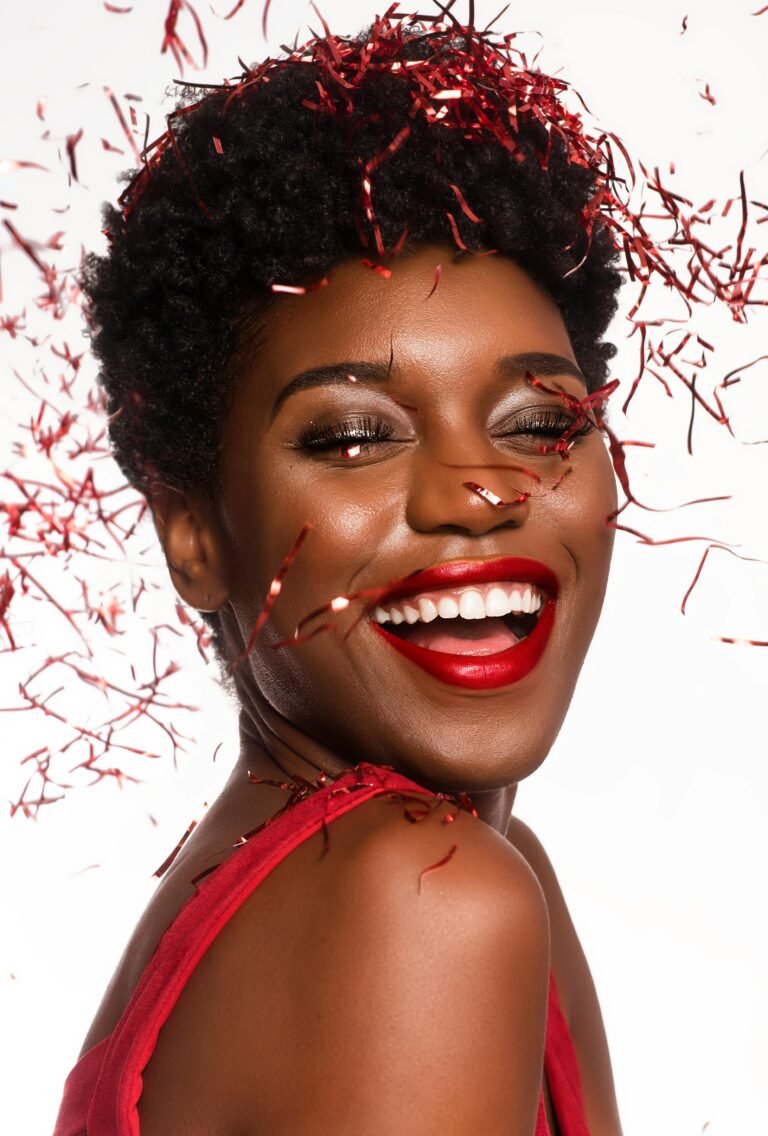How to use body language in create lasting Impressions
You have probably heard the saying, “You never get a second chance to make a first impression.”
Ever meet someone and instantly feel good vibes?
Or maybe you felt awkward or unsure?
A big part of that first impression is silent!
Our body language speaks volumes, even before we say a word.
First impressions are lightning fast.
Studies suggest we form an opinion about someone within the first 30 seconds of meeting them .
That’s a blink of an eye!
In this fleeting window, our use of body language plays a critical role, silently communicating volumes about our confidence, approachability, and trustworthiness.
Albert Mehrabian, a pioneer in nonverbal communication research, famously proposed that communication is comprised of
- 7% words,
- 38% vocal qualities (tone, pitch),
- and a whopping 55% facial expressions and body language .
This highlights the immense power of nonverbal cues in shaping how we’re perceived.
Whether you are meeting someone for the first time, going for a job interview, or giving a presentation, the way you present yourself can have a huge impact on how others perceive you.
And one of the most important aspects of your presentation is your body language.
So, how can you harness the power and use the body language to make a positive and lasting first impression?
What is body language?
“The body says what words cannot.” – Martha Graham
Body language is the non-verbal communication that you convey through your posture, gestures, facial expressions, eye contact, and voice.
Your body language includes how you stand, move your hands, look at them, and even the tone of your voice.
It’s like a secret code that tells others how you feel and what you’re thinking.
Research says more than half of what others understand from you comes from body language, while words account for only 7%.
It can reveal your emotions, intentions, confidence, and credibility.
That means that your body language can either enhance or undermine your verbal communication, and influence the impression you make on others.
As mentioned earlier, people form an impression of you in less than a second, based on your body language alone.
So how can you use body language to craft a positive and lasting first impression?

Smile:
“Smile, it is the key that fits the lock of everybody’s heart.” – Anthony J. D’Angelo
A smile is one of the most powerful and universal signals of friendliness, happiness, and trustworthiness.
It can instantly make you and the other person feel more comfortable and relaxed.
A genuine smile is a disarming and universally understood signal of warmth and approachability.
It puts others at ease and fosters a sense of connection.
However, a forced smile can appear forced !
Focus on a smile that reaches your eyes, crinkling the corners slightly.
This is a genuine “Duchenne smile” named after the French neurologist who first identified it [4].
A genuine smile not only makes you appear more friendly but can also elevate your own mood.
It also shows that you are confident and enthusiastic about the situation.
So smile when you greet someone, when you listen to them, and when you say goodbye.
Maintain eye contact:

“The eyes are the windows of the soul.” – William Shakespeare
Eye contact is a way of showing respect, attention, and interest.
It shows that you are involved and focused on the other person and what they are saying.
It also helps you establish rapport and connection with them.
Making eye contact is a cornerstone of good body language.
It demonstrates that you’re present, engaged, and genuinely interested in the person you’re speaking with.
However, there’s a fine line between confident eye contact and staring, which can make someone feel uncomfortable.
Aim for sustained eye contact for 3-5 seconds at a time, then look away briefly before making eye contact again.
This demonstrates attentiveness without being overly intense.
If you find eye contact challenging, try focusing on the space between someone’s eyebrows – they’ll perceive it as direct eye contact, and it can help ease your nerves.
Aim for a balance of eye contact and brief pauses, and follow the other person’s signals.
Use open gestures:

“Gestures are the punctuation of speech.” – Quintilian
Open gestures are those that expose your palms, chest, or torso, and indicate that you are open, honest, and confident.
They can also make you appear more friendly and approachable.
Open gestures project warmth and openness.
Avoid crossing your arms or clenching your fists, which can create a physical barrier and make you seem closed off.
Instead, use open gestures like palms facing outwards and relaxed hand movements to emphasize your points.
Steepling your fingers can signal critical thinking, but be mindful not to overdo it, as it can also come across as judgmental.
For example, you can use open gestures to highlight your points, to invite the other person to speak, or to show agreement or appreciation.
Avoid closed gestures, such as crossing your arms, legs, or hands, or holding objects in front of you, as they can make you seem defensive, nervous, or uninterested.
Mirror the other person:
Mirroring is the gentle and instinctive act of matching the body language of the other person.
It can create a feeling of closeness, agreement and trust between you and them.
It can also help you understand their feelings and emotions better.
Mirroring involves subtly mimicking the body language of the person you’re interacting with.
This subconscious mirroring builds rapport and fosters a sense of connection.
It shows that you’re paying attention and creates a sense of synchronicity.
Be subtle, though.
Don’t mimic every single movement – a natural flow is key.
Be careful not to overdo it or copy everything they do, as this can be perceived as creepy.
Mirroring can include posture, hand gestures, and even speech patterns.
For example, you can mirror their posture, head tilt, facial expressions, or tone of voice
Watch your tone:

Your tone of voice can convey a lot of information about your mood, attitude, and personality.
It can also affect how the other person responds to you and your message.
For example, a warm, friendly, a happy or upbeat tone can make you seem more likeable, positive, and confident, while a cold, harsh, sad or mono tone can make you seem more distant, negative, and insecure.
So pay attention to your tone and how it matches your words and body language.
Reading Context and Cultural Cues:
While these tips provide a strong foundation, it’s important to remember that body language can vary depending on context and culture.
A casual thumbs-up might be perfectly acceptable in North America, but considered rude in some parts of the Middle East or West Africa.
Being a good communicator involves not just sending clear signals but also being able to read and interpret the body language of others.
Pay attention to subtle cues like fidgeting, crossed arms, or averted eye contact, as they can indicate nervousness or discomfort.
Authenticity is Key:
While mastering body language is a valuable skill, it’s important to remember that authenticity is key.
Don’t try to be someone you’re not.
The goal is to feel comfortable and confident in your own skin, allowing your genuine personality to shine through.
Your body language will naturally follow suit.
These are some of the ways you can use body language to craft a positive and lasting first impression.
By being aware of your body language and how it affects your communication, you can improve your personal and professional relationships, and achieve your goals more effectively.
Remember, how you use your body language speaks louder than words, so make sure it says what you want it to say.

